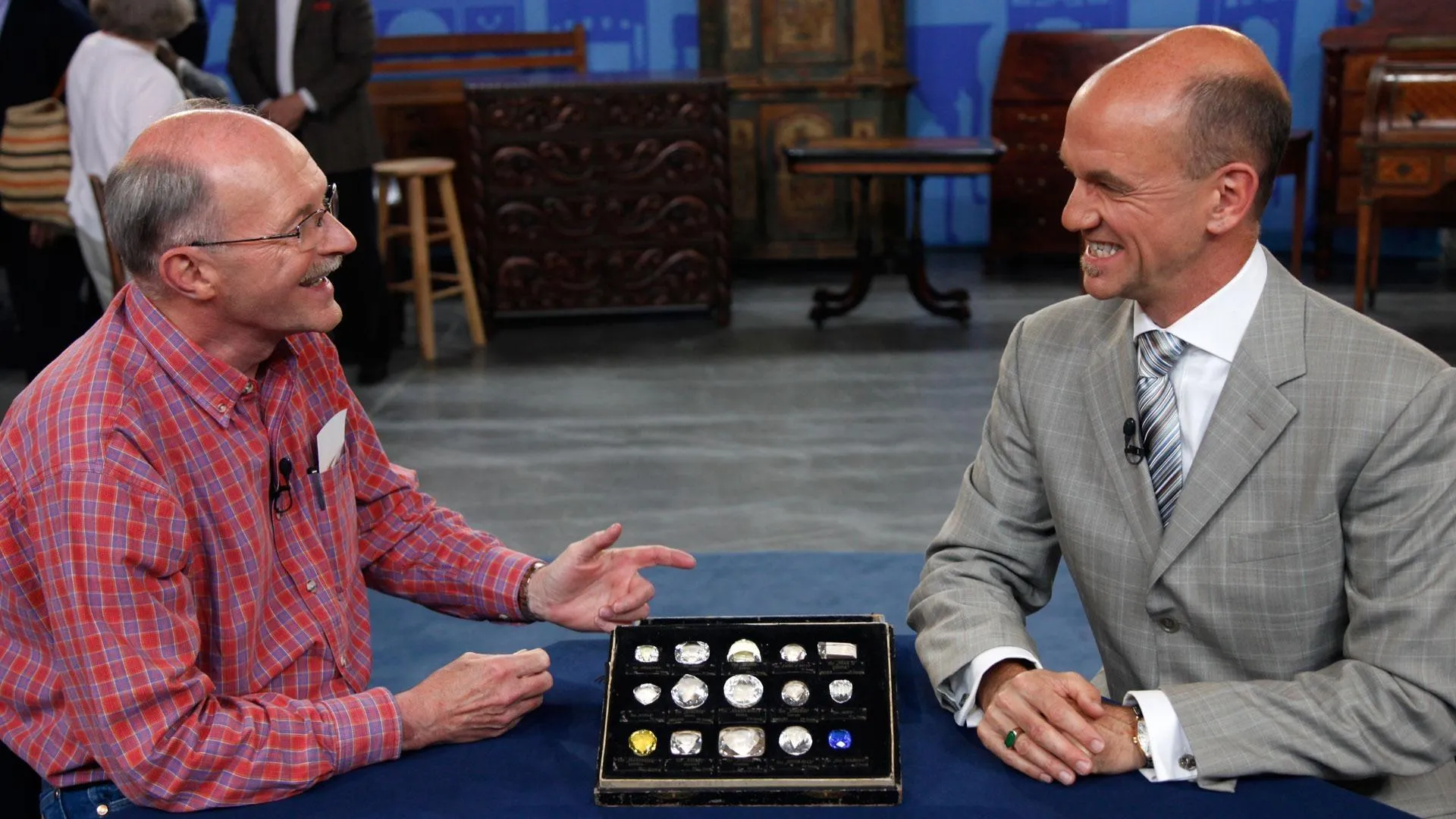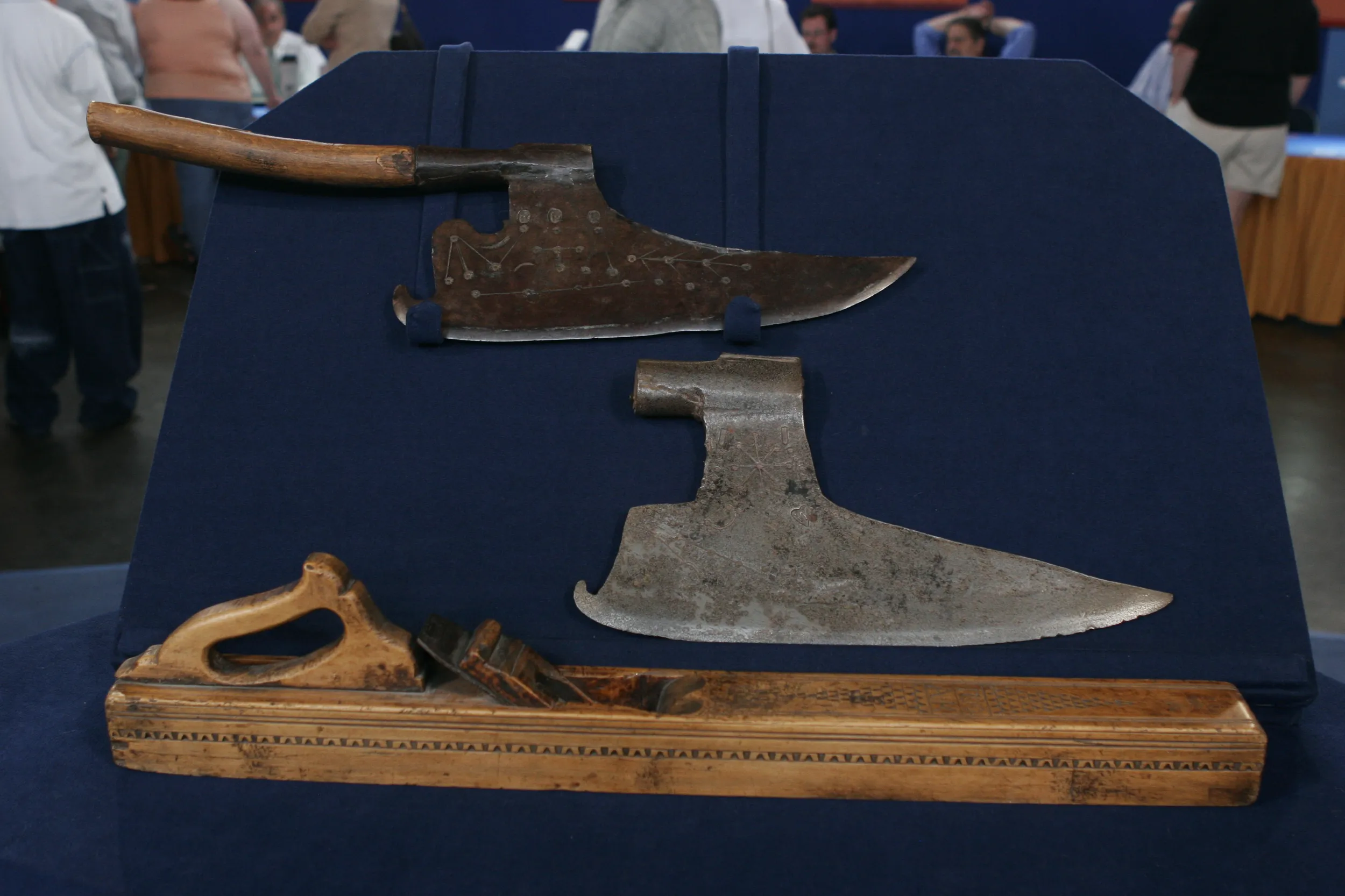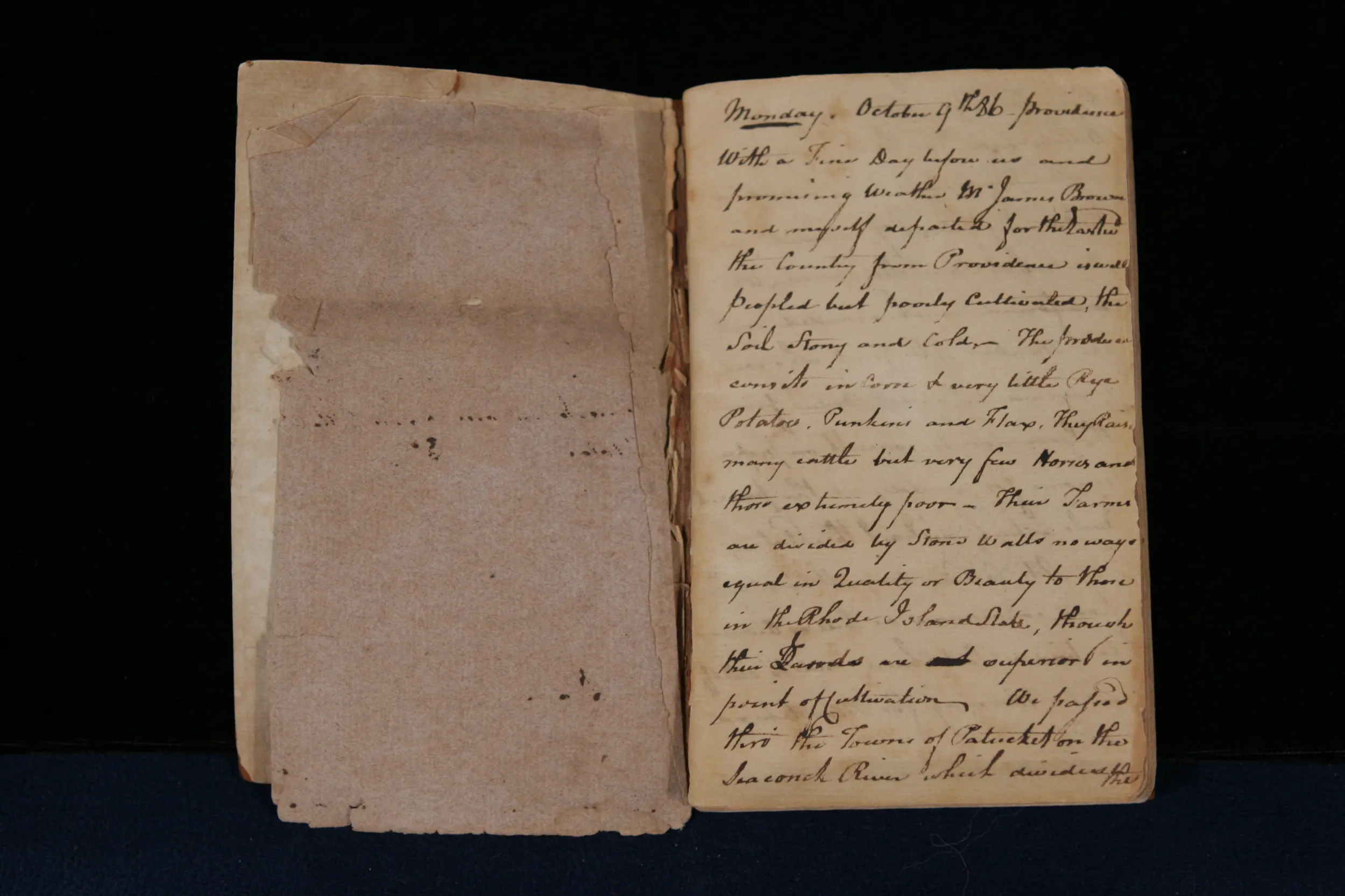GUEST: This desk belonged to my mother-in-law in Ohio. She passed away about four years ago. She grew up in Kentucky. And her parents were from Kentucky and we believe her grandparents were also from Kentucky. And her grandfather was an antiques collector. I had always admired the desk. It was in her bedroom. And when my father-in-law died a year ago, my husband and I inherited many pieces of their furniture.
APPRAISER: I see, including this.
GUEST: Including this desk.
APPRAISER: Well, it's a slant front Chippendale desk. Do you know the date of it?
GUEST: Only from the...
APPRAISER: The label?
GUEST: The certificate, yeah.
APPRAISER: It's actually 1798. It's unusual that we find something dated, exactly when it was made. Do you know where it was made?
GUEST: Rhode Island, it says.
APPRAISER: Exactly. Slant front desks in the 18th century like this were really like the early, early computers. They were organizers. These are all locked drawers. They stored things like documents, files, money. Inside here we have all these little document drawers and this gorgeous fan, beautiful late 18th century carving. All this is typical Rhode Island. The blocked center section. Now, the man who used this, who owned it, was actually left handed. You know how we know that?
GUEST: No.
APPRAISER: Well, if you pull out these drawers, all the ink stains are on the left. You see, he was a little bit, a little bit messy. We don't really see those over here on the right side. Another reason we know it's Rhode Island is you look inside in this document drawer, and that's chestnut. And there's chestnut throughout the entire piece. Chestnut backboards, chestnut drawer sides, and that's a Rhode Island characteristic.
GUEST: Oh, okay.
APPRAISER: What I love about this is the wood. He's chosen the wood, this cabinet maker, to swirl up the front and draw our eye upward. And it ends almost like on fire, like a bonfire. Flame mahogany, the richest, most beautiful mahogany you could buy at the time. And amazingly the sides are also equally figured. So they really didn't spare any expense in making this. It also has the original brasses. Let's look at the label inside. And this is so rare to have a labeled piece. And the size of it is what's amazing. It's a huge label. And this is labeled by Thomas Howard. And he says, "Having removed from Providence"-- he used to work in Providence, Rhode Island-- and now he's in Pawtucket, October 1795. He's advertising what he sells. I see the word "chairs"-- we know he made that. Well, this is actually the only piece of Chippendale furniture that we know that Thomas Howard made. Only documented piece anywhere-- museums or in the market. So that makes it pretty rare. It's a little bit deteriorated, but basically it's incredible to have it there. How do you know it's original? Because a lot of people put fake labels on them later. Here's the animal hide glue. And you've got a nice shadow there. So I think that's the original label. You know what that hole is?
GUEST: No. I was wondering what that was.
APPRAISER: That was a knot that popped through. We have to think of condition, of course, of any antique. And it really affects the value. And these feet are replaced.
GUEST: Oh, they are?
APPRAISER: They should be another three inches higher. There should be less of a curve. The should be classic Rhode Island feet, and they aren't. And there are also sharp edges. You almost cut yourself on the edge there. Where this is all worn from 200 years of use. And also these little fine moldings on the edge of these drawers, they got broken once and somebody just sanded them all down. So it's got its condition issues. It's been refinished. This got replaced with a late 19th-century... it's a machine-stamped escutcheon. Now, do you know anything about value? Was it appraised at any time?
GUEST: Oh, we found an appraisal list my father-in-law's house. And it was appraised, I think it was 2008, for $7,500.
APPRAISER: Well, because of the fact that this is the only Chippendale earlier piece we know of documented, there would be a lot of museum interest. I would put an auction estimate on this piece of about $10,000 to $15,000.
GUEST: Okay. Good.
APPRAISER: Now if the feet were original and it wasn't refinished, the auction estimate would be $50,000 to $80,000.











